This post may contain affiliate links. Please see our disclosure for more information.
This soup is inspired by winter snow and vegetables that are white, or light in color.
I’m talking about white potatoes, cauliflower, turnip, celery root, fennel root, kohlrabi, parsnips, rutabaga, onion, leeks, celery, and radishes.
Jump to RecipePotatoes, turnips, celery root, rutabaga, and white radish are all roots that are readily available in the winter, which is why I call this my Winter White Vegetable soup.
You don’t need to use all the vegetables. Just a selection of them. You can mix and match.
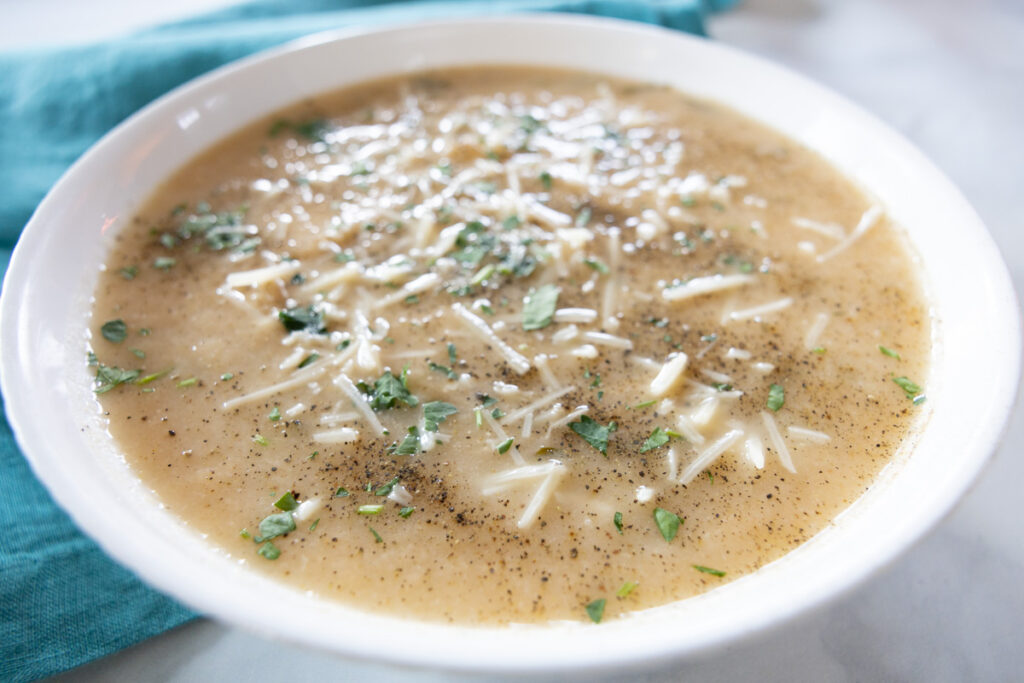
Health benefits
My hope is that this soup recipe will encourage you to try a new vegetable, and that’s because winter vegetables are supportive for your health when consumed in the winter.
The secret is in the taste.
Many white vegetables, such as turnips, cauliflower, and radish, contain the pungent and bitter tastes.
This means they are both warming and cleansing.
Turns out that warmth and a little reducing action is just what the season requires, since cold weather tends to cause stagnation and heaviness in the body.
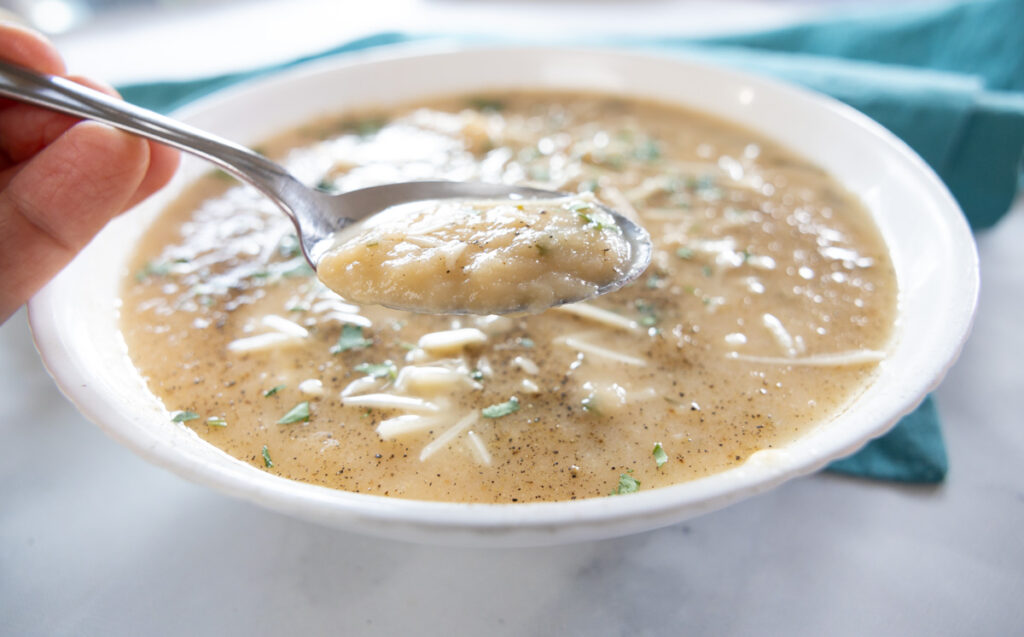
6 tastes summary
I personally find the flavor of this soup joyful and refreshing.
It’s actually because of the repetition of the bitter and pungent tastes, as well as the other tastes.
The science of 6 tastes comes from Ayurveda, which is the modality I practice where food and lifestyle habits are used medicinally to create balance in mind and body.
In Ayurveda, when a dish contains all 6 Tastes, it results in a highly satisfying and blissful experience.
In this recipe, we have:
- SWEET: potato, onions, leeks
- SOUR: fresh lemon or vinegar
- SALTY: salt, celery
- BITTER: celery, turnip, rutabaga, parsley, parsnip
- PUNGENT: celery, leeks, white radish, garlic, black pepper, parsley, green onion for garnish
- ASTRINGENT: potato, cauliflower, turnip
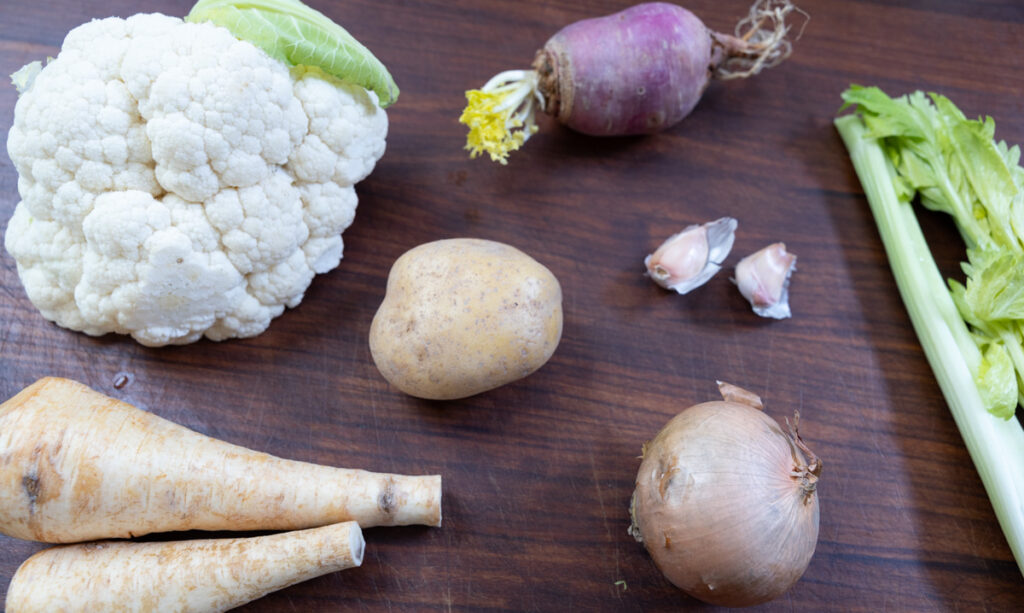
Dosha variations
KAPHA DOSHA
Due to the prominence of the bitter, pungent, and astringent tastes, this soup is most pacifying for Kapha dosha, and for enjoying in the winter and early spring, which is Kapha season.
Kapha will do well to choose rutabaga, celery root, or turnip instead of potato.
Kapha can choose water rather than stock as their liquid, and use the black pepper and green onion garnish suggested, since the pungent taste supports Kapha.
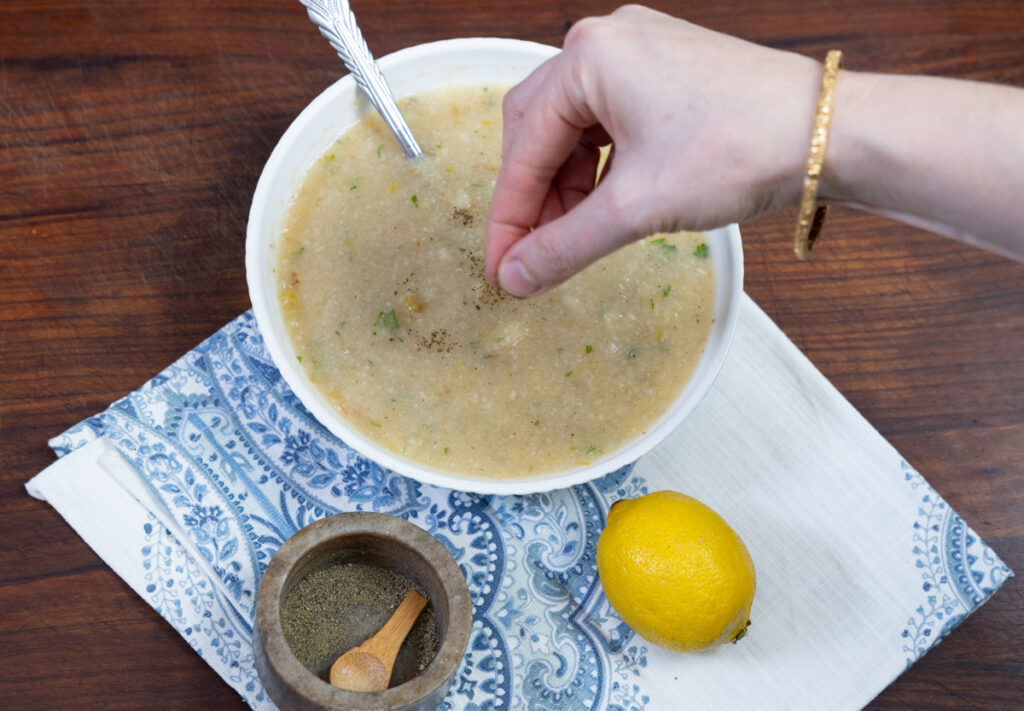
PITTA DOSHA
Pitta dosha will also do well with this soup.
To modify for further balancing, reduce the garlic to one clove or none, substitute garlic with fresh ginger, and minimize other pungent ingredients.
Pitta can select potato or rutabaga, water or stock as their liquid, and use the feta cheese garnish suggested for extra protein and satiety.
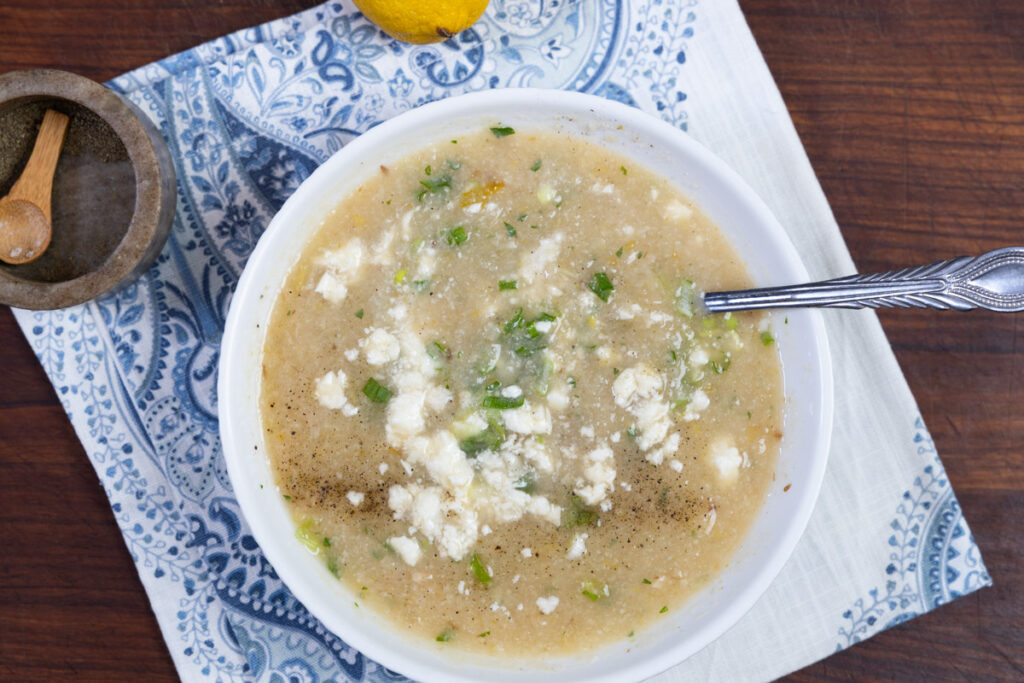
VATA DOSHA
Vata dosha will want to add more sweet taste by substituting the cauliflower with fennel root, parsnips, or summer squash.
Vata may use the potato, or select sweet potato or rutabaga.
Also be sure to add enough salt and lemon, and go for the optional feta cheese garnish for extra fats, and use the vegetable stock for extra nourishment.
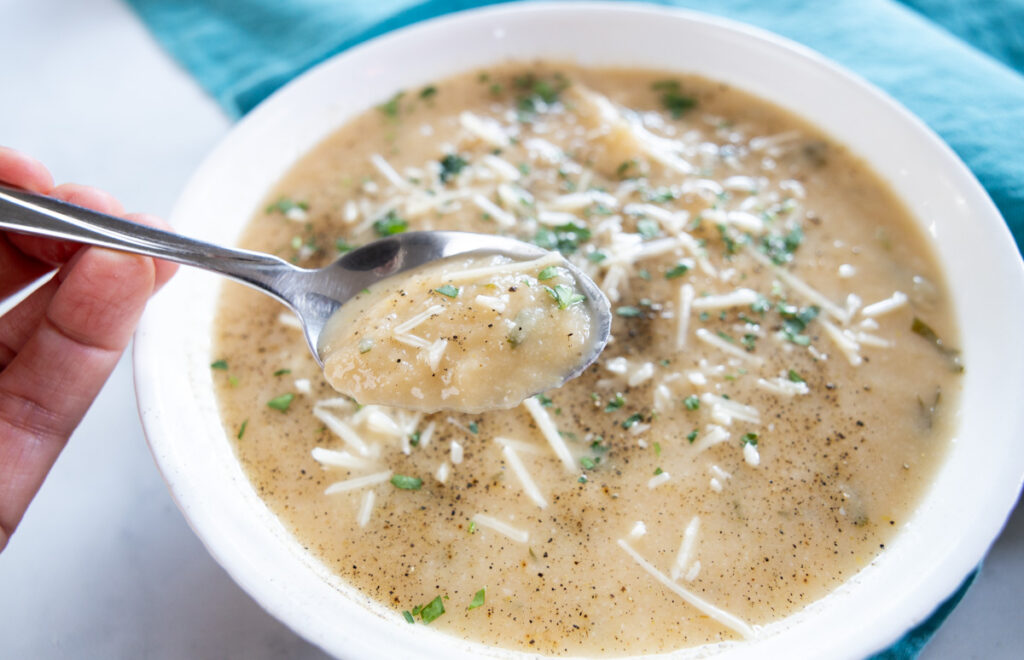
Vegetable substitutes and add-ins
If you are avoiding potato, you can easily substitute the potato for another white, or light colored vegetables.
You can could try rutabaga, turnips, kohlrabi, parsnips, celery root (celeriac), or white (daikon) radish.
For substitutions and add-ins that are more on the sweet side, try fennel, parsnips, or summer squash.
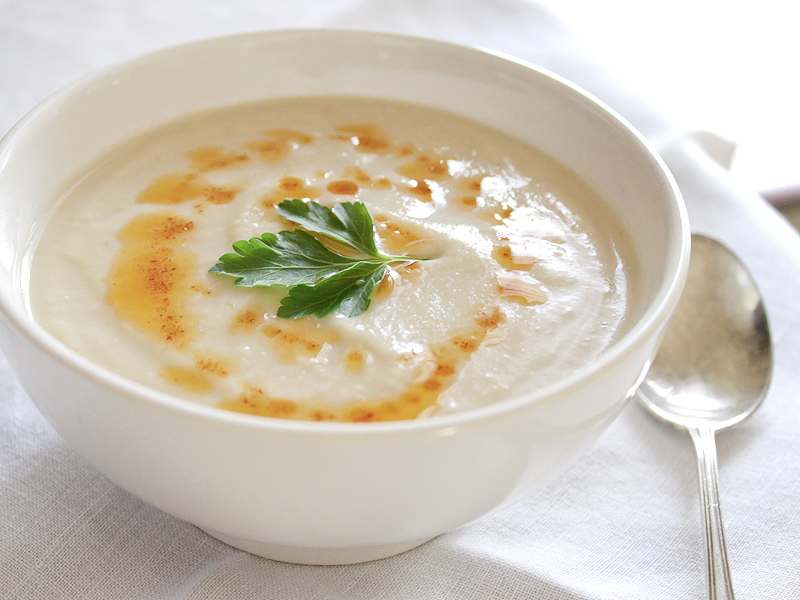
Recipe for Winter White Vegetable Soup
Equipment
- medium saucepan
- immersion blender
Ingredients
step 1
- 1 1/2 tablespoons ghee, butter, or olive oil
- 3 stalks celery chopped
- 1 cup onion or leek chopped
- 2 cloves garlic finely chopped (sub with ginger)
step 2
- 2 cups cauliflower chopped
- 1 1/2 cups potato, rutabaga, or turnip peeled and chopped
- 4 cups water or vegetable stock
to finish the soup
- 3 tablespoons parsley chopped
- 2 teaspoons lemon freshly squeezed, or to taste
- 1/4 teaspoon salt or to taste
to garnish the soup (optional)
- feta cheese or Parmesan to taste
- green onion finely chopped
- black pepper freshly ground
Instructions
prepare
- Chop celery, along with the onion or leek and garlic. Keep them together in one bowl, and set aside until needed.
- Chop cauliflower and the potato, rutabaga, or turnip, and set aside until needed.
cook the soup
- Heat ghee in a medium saucepan on medium heat. Add celery, onion or leek, and garlic. Sauté until starting to brown.
- Add cauliflower, potato/rutabaga/turnip, and water or vegetable stock. Bring to a boil, then reduce to a simmer. Cook for 30 minutes, or until the vegetables are soft.
finish the soup
- Decide if you prefer a puree, or a more chunky soup. Use an immersion blender to blend the soup to your desired consistency.
- Turn off the heat and stir in chopped parsley, lemon juice, and salt. Taste, and adjust for salt and lemon.
- Serve into individual bowls and top with optional feta cheese or Parmesan, finely chopped green onion, and/or freshly ground black pepper.
